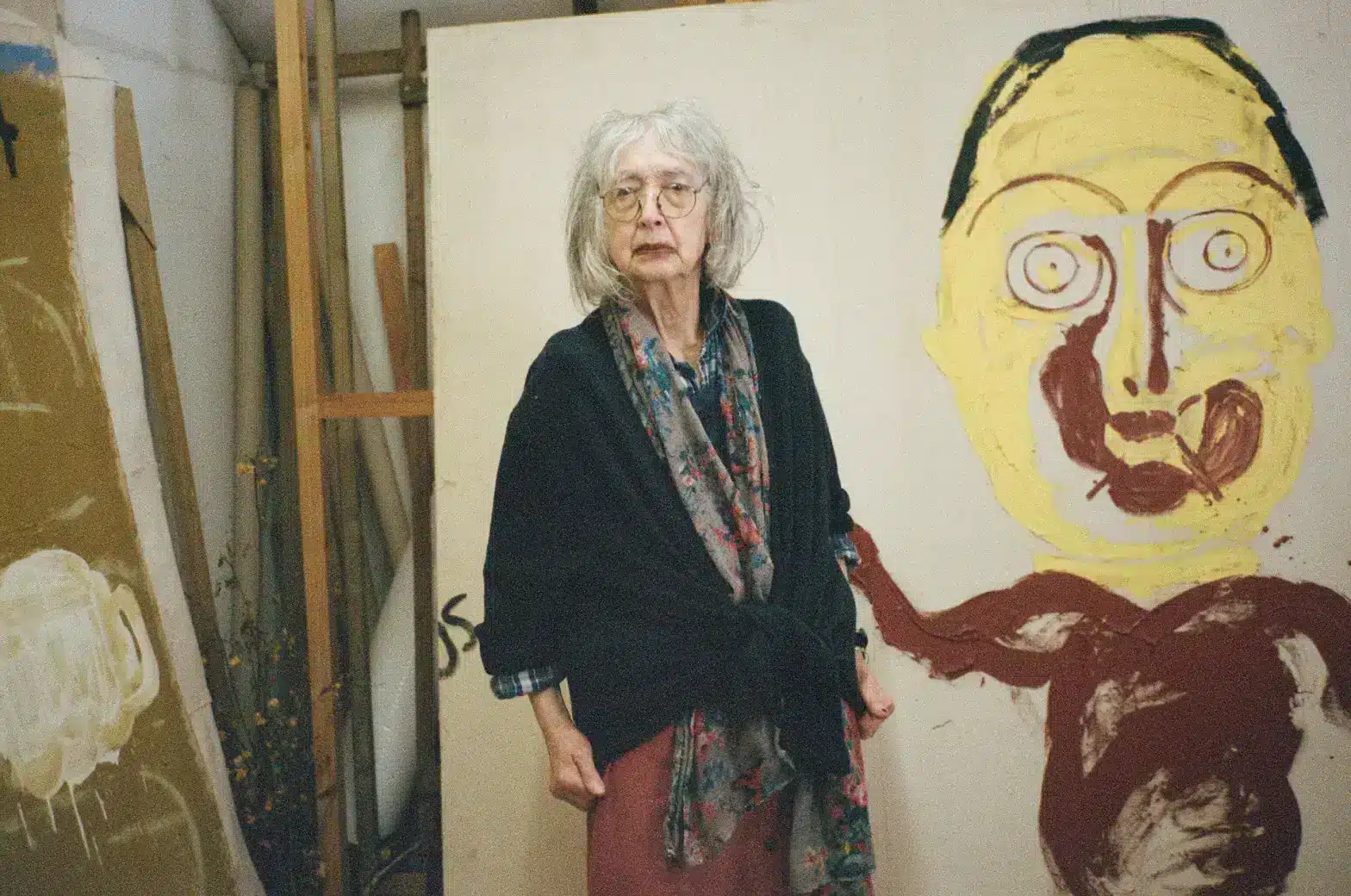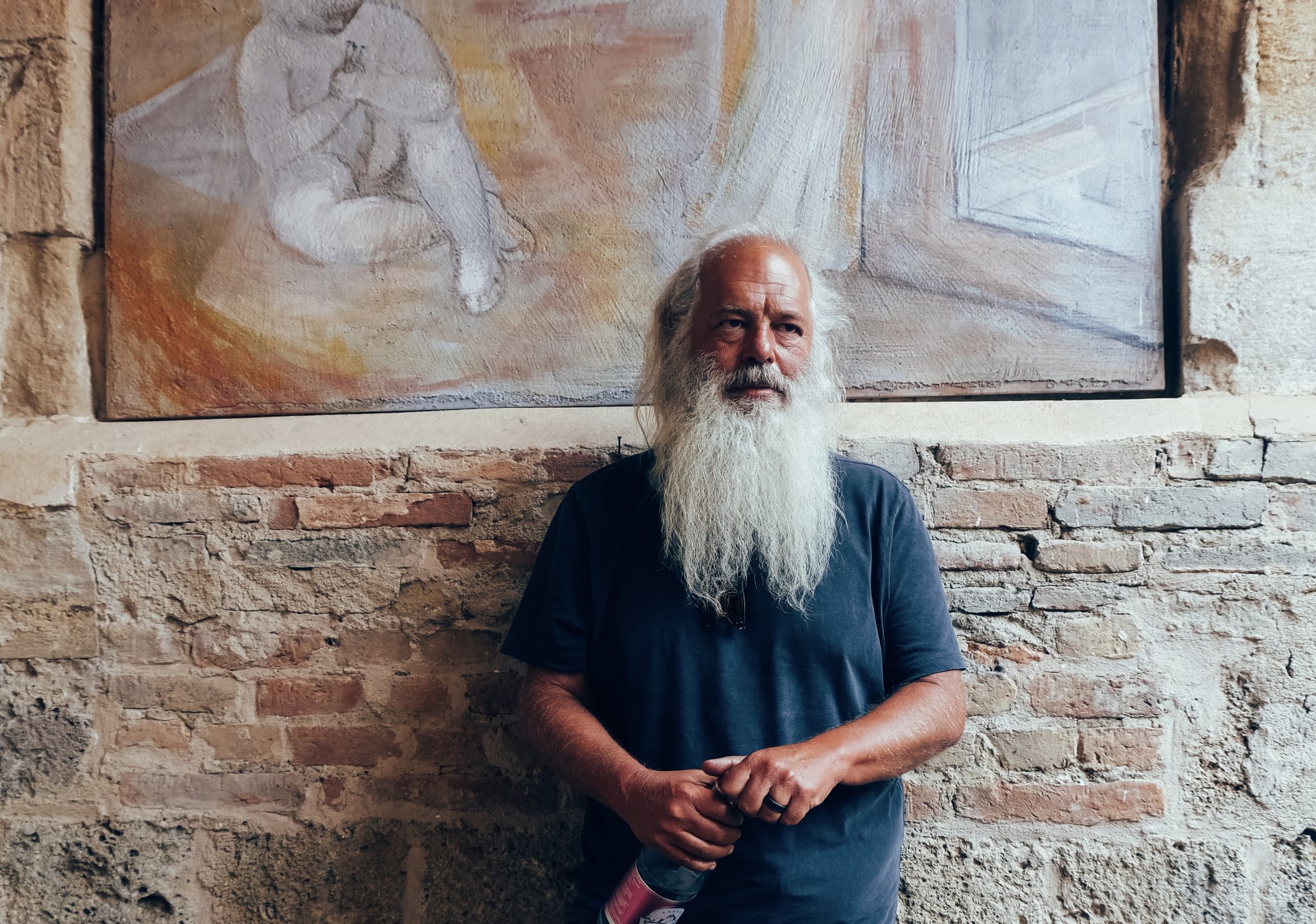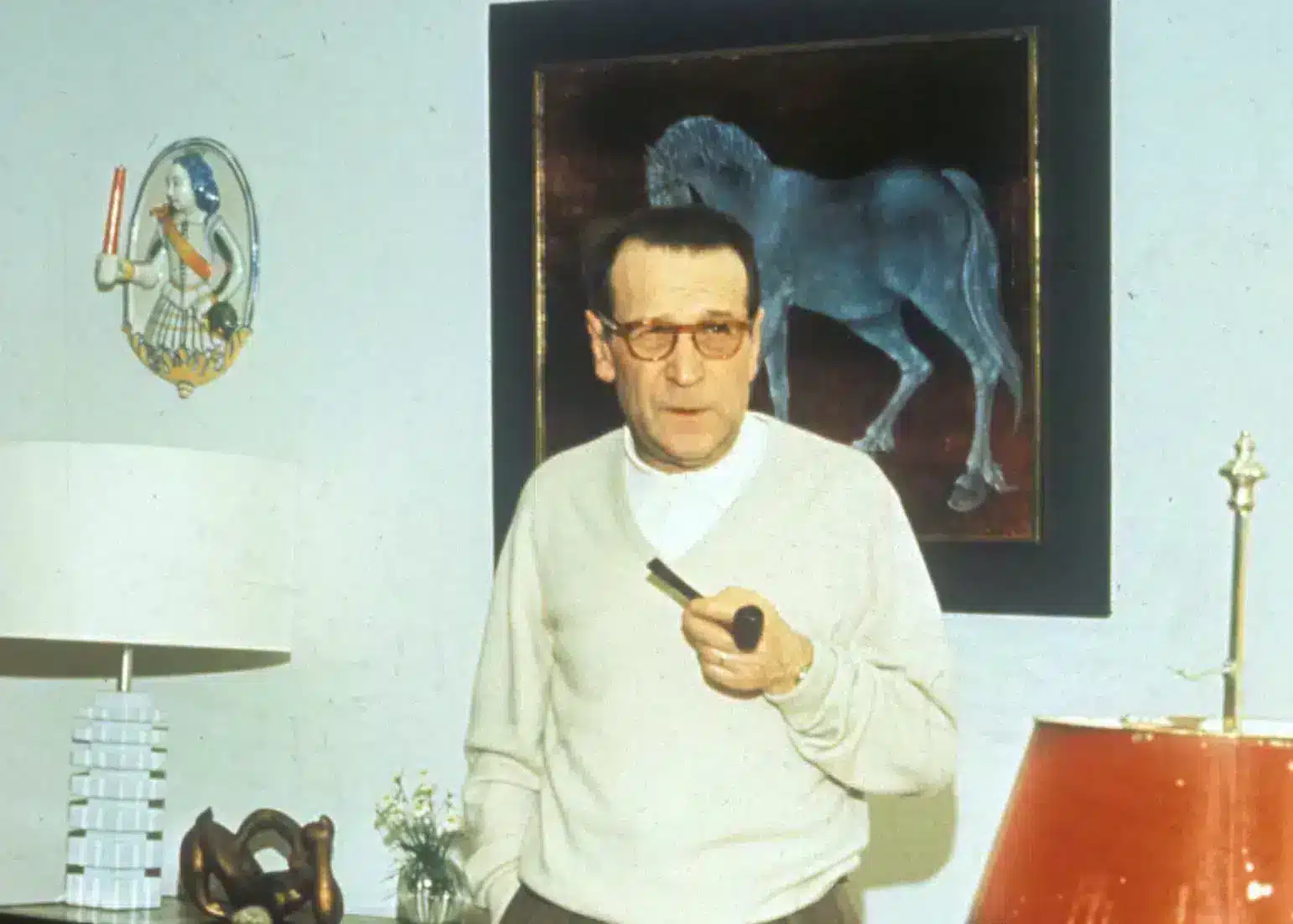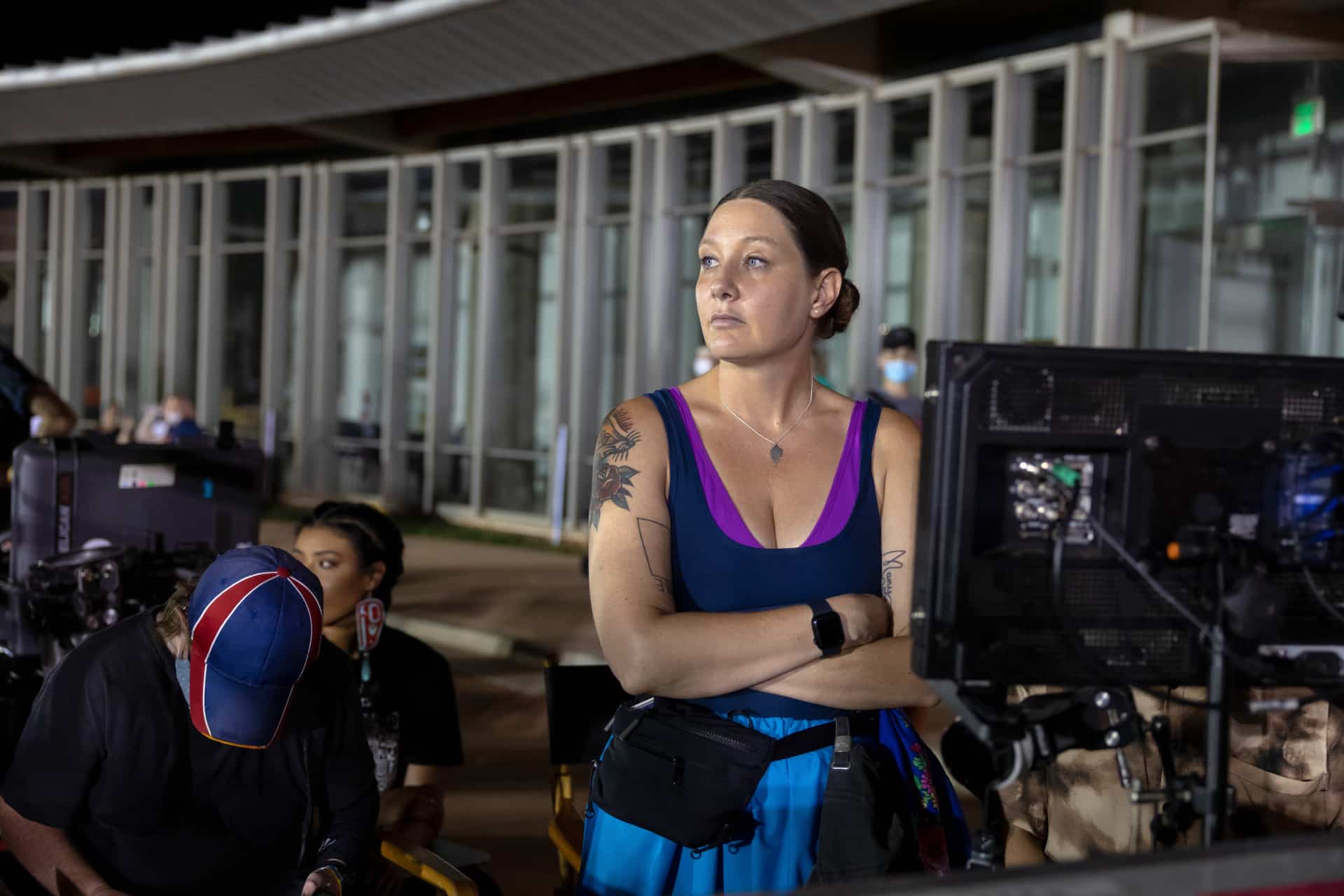
Native American director Erica Tremblay, well known for her breakout documentary feature In The Turn, has just released her first fiction feature film, which is at once a thriller, a road-trip movie, and a proud declaration of the Seneca Cayuga culture—and it’s one of the most impressive gems of the year so far.
The release of Fancy Dance, which Tremblay adapted from previous short Little Chief (2019), has come at a pivotal time for the representation of Native American culture on-screen. For one, it’s hot off the heels of Martin Scorsese’s Oscar-nominated Killers of The Flower Moon, which drew praise and criticism for its adaptation of David Grann’s book of the same name for its divisive exploration of the infamous Osage murders in 1920s Oklahoma. “I keep thinking what an amazing moment in history that we’re able to sit here and talk about two movies about Native Americans.” She tells me. “Five years ago you couldn’t have told me we would be living in this moment, so I’m so grateful for that.” Scorsese’s film also stars Gladstone, in a star-making performance, though while much of KOTFL’s narrative exists outside of the general point of view of Mollie Burkhart (Gladstone), Fancy Dance is deeply rooted in Gladstone’s character’s perspective, and the movie is all the more invigorating for it.
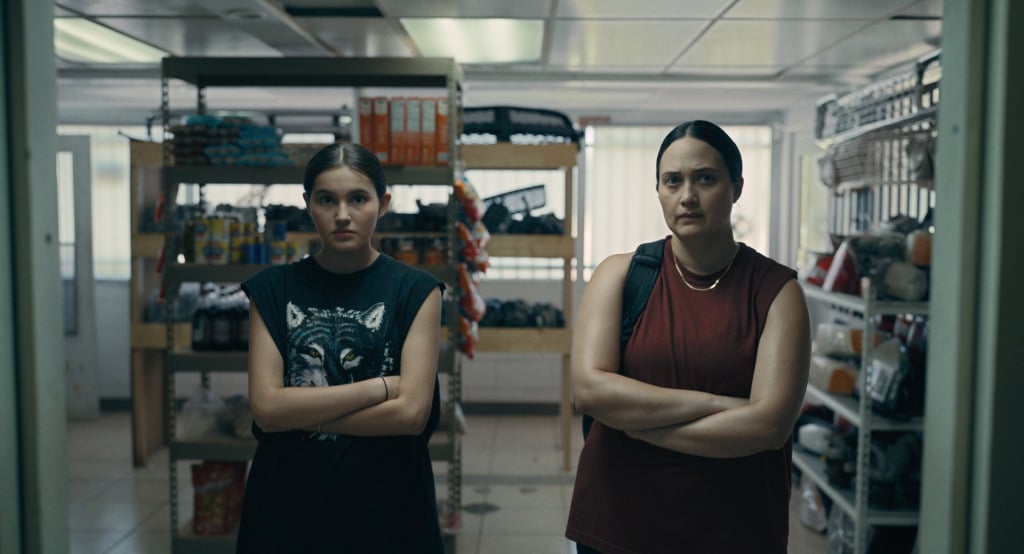
Gladstone plays Jax, a member of the Seneca Cayuga nation, whose sister Tawi (Hauli Gray) has recently vanished, seemingly without a trace. Since then, Jax has been the primary guardian of Roki (Isabel DeRoy-Olsen), her spirited young niece. Roki doesn’t know the full extent of her mother’s disappearance, and thus holds out hope that she’ll be there to see her perform at the upcoming powwow, a traditional night of music and dance in the Seneca Cayuga culture. When social services show up at their door threatening to take custody of Roki away from Jax in favour of her white grandparents Frank and Nancy (Shea Whigham and Audrey Wasilewski), the two embark on a roadtrip to find her mother in time for the powwow.
We caught up with Tremblay to discuss the cultural meaning behind the powwow and fancy dancing, reuniting with Lily Gladstone after working with her on Little Chief, and celebrating the existence of a film for and by the Seneca Cayuga nation.
Luke Georgiades: How did you land on the name Fancy Dance?
Erica Tremblay: In powwow culture and Native American culture, fancy dancing is one of the premiere styles of dance. I’m not exactly sure how the translation of Fancy Dance came about but I’m sure it has to do with the bright, colourful regalia that’s worn for fancy dancing and all of the bustles and feathers and bells and the shawls with the tassles. For me, it is such a huge part of Native American culture and the coming together of the powwow culture. I wanted to pay homage to the beautiful culture of powwow, but also dancing is a huge thematic part of the film.It’s a huge motivator for Roki during the film. Her missing mother was a stripper and she danced in a strip club to provide a home and food and safety for her child. As well as that, our two protagonists are also having to dance between these two worlds—the world at large and their own community.
LG: Was it a challenge finding a choreographer who could bring the powwow dance to life in a way that felt authentic?
ET: I haven’t done much powwow dancing myself, but having grown up in and around Oklahoma, I’ve gone to hundreds of powwows in my life. So I started to do outreach in the Oklahoma area—someone who could come in and help with the choreography. We met this woman Holly, who is a champion fancy shawl dancer, and she came in and helped create all of the dance sequences, she helped us bring in all of the extras for the powwow scene. It was great because Hauli Gray also played Tawi, Roki’s mother, in the film. So Lily [Gladstone] and Isabel’s characters already had this really resonant emotional connection with her that shines through in the movie.
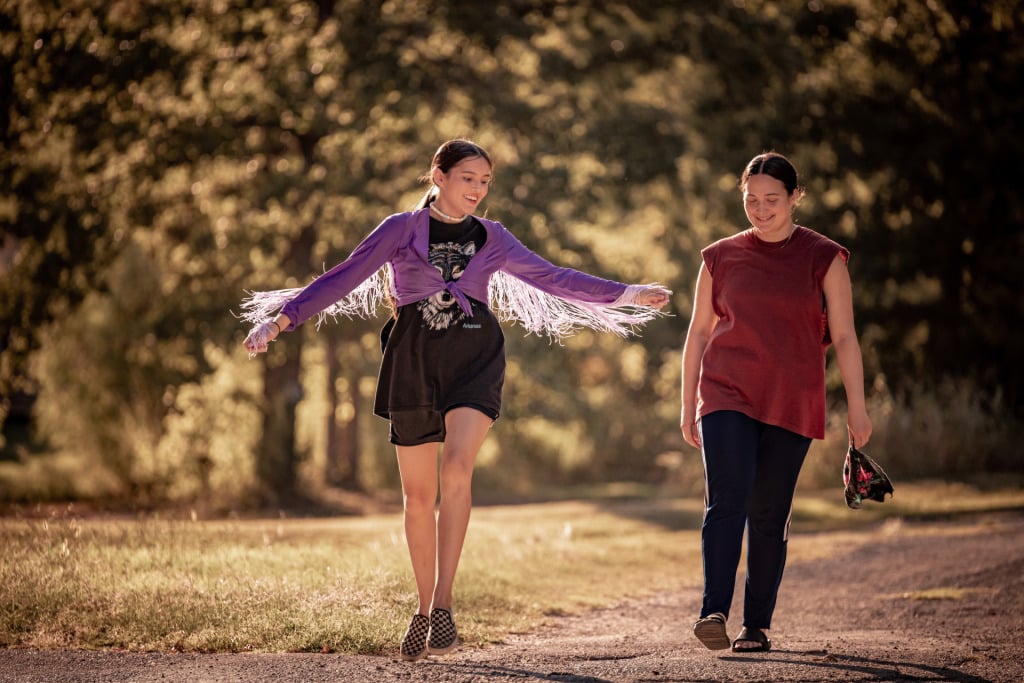
LG: What other elements did you need to consider in order to communicate this culturally specific musical tradition?
ET: We were also able to bring in a drum group who composed three songs for us to bring us through the tail-end of the powwow, and for the score as a whole we worked with this incredible indigenous artist called Samantha Crane. We were very inspired by Native ceremonial songs and women seed songs, so throughout the film Samantha uses her voice as a percussive element that is very much tied to ceremonial practices. So the dance and the music was a very important part of bringing the movie to life.
LG: Do you find by making movies about the Seneca Cayuga culture that you continue to learn more about the culture itself and your connection to it?
ET: That’s what’s been so great about making this film and the nuances of it. Attending the powwow is part of it. It’s about coming together as a community, and supporting this activity that’s happening in the middle of the grass. Those elements are rich in our culture. What’s so beautiful about native americans making films about their own communities is that we’re able to bring with us those nuanced realities. As a person who’s been to many powwows, and has family members that have participated in powwow dance competitions, I’m able to understand what that means culturally. Consequently, I can write a scene like the scene between the white grandmother and the young Native woman, and the former presents these ballet shoes as an alternative to powwow, and the latter looks at her like ‘that’s not the same’. Going to a powwow holds more weight than that. It’s about togetherness.
LG: What were you hoping to express with Roki’s grandparents? You really kept them balanced as characters, as opposed to vilifying them.
ET: I have a white dad and I have white grandparents, and though this film isn’t autobiographical in any way, I do believe that Frank and Nancy are doing the best with what they’ve got. Jax isn’t always making the right decisions. She’s got good intentions, she’s not a bad-spirited person, and you always understand why she’s making the decisions she’s making, even when you’re aware from an audience perspective that it’s the wrong decision. I wanted to apply that same humanity to her white family. While Frank and Nancy are antagonistic forces in the story, it’s not black & white, and they aren’t just evildoers who are showing up to ruin the day. They’re making decisions based on their experiences in their own world—and the settler view system in which they live. We wanted to apply humanity across the board, so the characters would feel real and lived in. That’s how you get the audience leaning in. That’s where the conversation comes from.
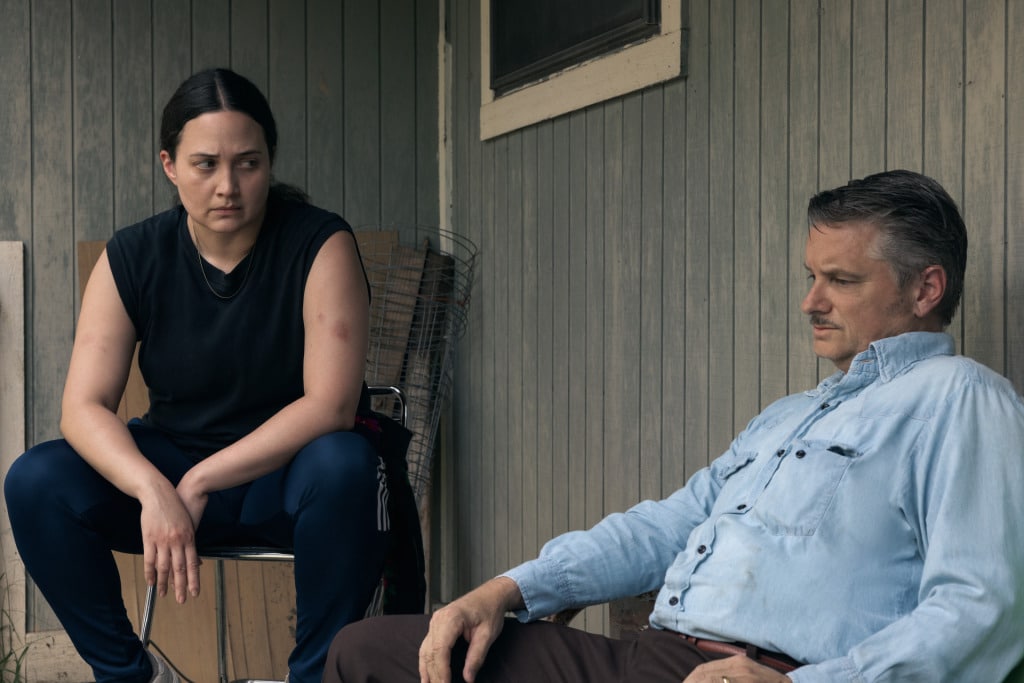
LG: How did you come to cast Isabel DeRoy Olson? Her performance in this movie is mature beyond her years.
ET: Lily [Gladstone] was attached to the film from the moment it was conceived. I knew from working with her on my short film Little Chief and after seeing Certain Women just how powerful a performer she is. I knew she was incredible. But we knew that if we were ever going to make this movie we were going to need to start the search for Roki immediately. So we used our grant money to bring on a native casting director, and we started a North American-wide search for this young girl. We saw hundreds of beautiful auditions from incredible indigenous talent, and I knew I needed someone who had a personality big enough to match Lily’s energy, and wouldn’t dim next to her light.
I was casting a role on a TV show I was working on, and we were looking for a pregnant teen. Isabel’s tape came across my desk, and she looked way too young to play that role, but she did look exactly the right age for Roki. The moment I met her I knew she was the one. The moment she arrived in pre-pro with Lily and the two of them were connected, I just knew they were Jax and Roki. They both loved to prank people. Isabel was pranking Lily constantly, and they were both pranking the crew, and they just had this effervescent relationship. They loved being around each other. Their precocious, curious nature shines so brightly in the film. Their connection was so strong that now Isabel is playing a younger Lily in Lily’s new TV show Under The Bridge. What a beautiful way to keep working with each other.
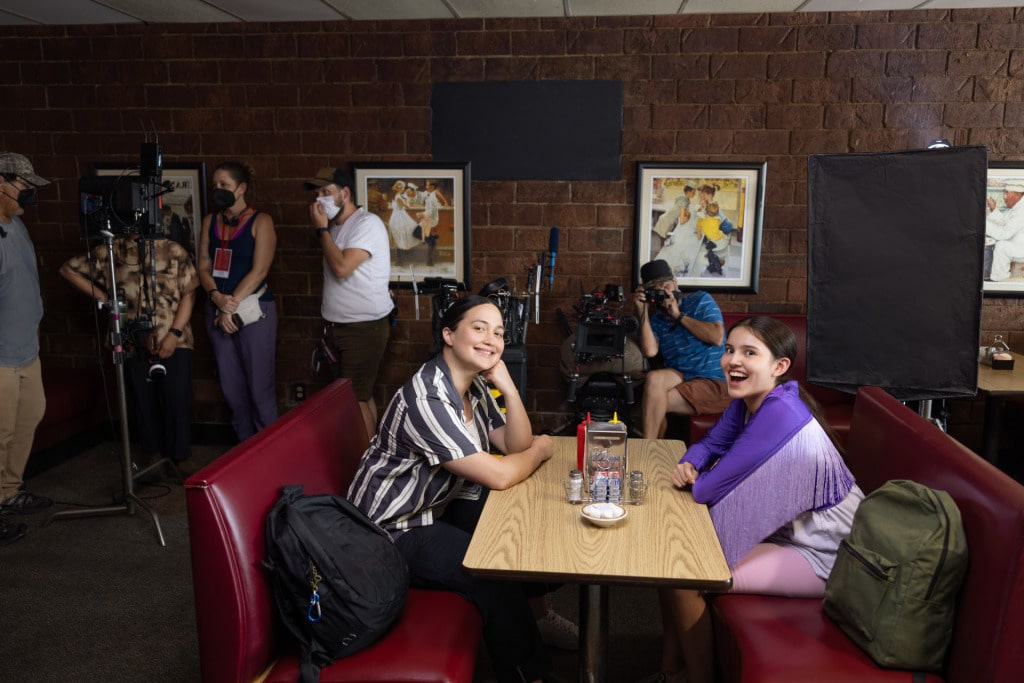
LG: What kind of qualities do you feel like Lily has that aligns with what you wanted from this character?
ET: Lily was a part of every draft of the script. She wrote every word we wrote. She had thoughts and comments on what she thought her character would do. And she brought a lot of ideas to the table. Lily can do anything. Lily can play any role. I can’t wait to see her take on more and more roles so everyone can see the range that this human has. She’s not a collaborator, she’s also a dear friend. I got to tag along to her milestone moments last year—I got to see her standing ovation at Cannes, and see her meteoric star rise, and I’m so excited for her.
LG: It must have been interesting for her to come off of a film like Killers of The Flower Moon which is of course about an indigenous community but isn’t always told from their perspective, to this film which is deeply rooted in her character’s perspective. What’s your opinion on the similarities and differences between these two projects?
ET: I keep thinking what an amazing moment in history that we’re able to sit here and talk about two movies about Native Americans. Five years ago you couldn’t have told me we would be living in this moment, so I’m so grateful for that. I think it’s always daunting because this is my first feature, so to be asked “now compare your movie to Martin Scorsese’s” is a little scary [laughs] but to me, to see how that movie has opened up the conversation for Native Americans to talk about their work is amazing. To be in the conversation at all is gratifying. Look at the history of Native Americans in cinema. If it wasn’t for Sterlin Harjo, and Sydney Freeland and Danis Goulet making their indie films over the past 20 years, then I really don’t know where we’d be. Inclusion of Native Americans was virtually non-existent, and the representation of us has been so poorly communicated in the canon of cinema, so the fact that we’re sitting here right now talking about a film that’s from the Seneca Cayuga nation, made by a Seneca Cayuga director…all i can do is celebrate the fact that we’re finally existing in a space where previously there was no room being made for us to do so, and that we get to be a part of a broader conversation about how we can bring more authenticity to cinema.
In your LA times column you wrote “are people going to trot this film out every thanksgiving as a way to absolve this long history of erasure?” Is that something you were really quite nervous about at the time?
ET: It’s no secret that it took our film a minute to sell, and we were dealing with a very fraught time with the strikes, and with everything changing in the industry right now, there were a studio that reached out that had no interest in buying the film but wanted to share the film as a part of one of their diversity initiatives, and that’s so offensive to me. This film is not meant to be like “oh look, it’s thanksgiving, let’s play the three Native American films that exist.” We needed Hollywood to step up to the plate. They all say that they’re fighting for these stories, for BiPoc creators, and when it comes down to it there’s crickets. So what an incredibly wonderful ending for this film to end up on Apple and be allowed a global release. I’m happy where it turned out, and hopefully it leads to more financiers stepping up to the plate to fund more authentic and diverse stories.
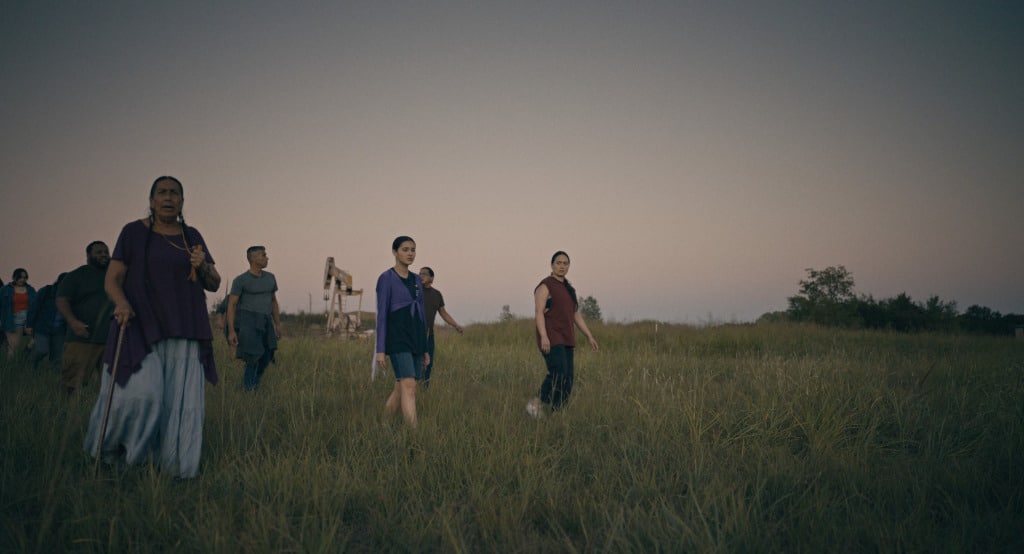
LG: This film feels a bit like a hybrid of genre: you have elements of the rom-com here, you have elements of a road trip film, and then you have these moments of thriller. Was that something you were really conscious of as you were writing and making the film?
ET: This film was such a character driven drama, and we had so much fun melding these genres together, having these thriller elements that force our characters to make decisions. When me and Miciana Alise [co-writer of Fancy Dance] sat down and thought about what we wanted to do next, we were really interested in going deeper and darker into the thriller genre, akin to 90s thrillers like Single White Female, and explore the co-opting of Native American culture and how seedy and violent that is. We’re getting angsty and bringing out our inner goths in our next movie.
LG: What do you think is unique about the Seneca Cayuga culture that shines through in this film and differentiates it from other indigenous native american cultures and tribes?
ET: Our language is considered extinct. And there are so few elders left that are first language speakers. The use of language in this film is so important, and it’s so important to shed light on the revitalization of native languages. I wanted to imagine a world in which young people still spoke the language. So it was a real honour for me to be able to share the film with elders this past winter, who got to see their language on screen for the first time. They were smiling from ear to ear. It was the biggest gift ever. For me, making this film, first and foremost, my responsibility has always been to my community, and to Native American communities. That’s why it was so important to me that this film be accessible via streaming all across the United States and North America for indigenous communities to see a film that was made for them.
Fancy Dance is available to stream on Apple TV+ now.
